How MLB’s 30 Home Run Hitters Are Contributing to History
Five different hitters reached the 30 home run mark in the first half. Here's what's been behind their success this season.
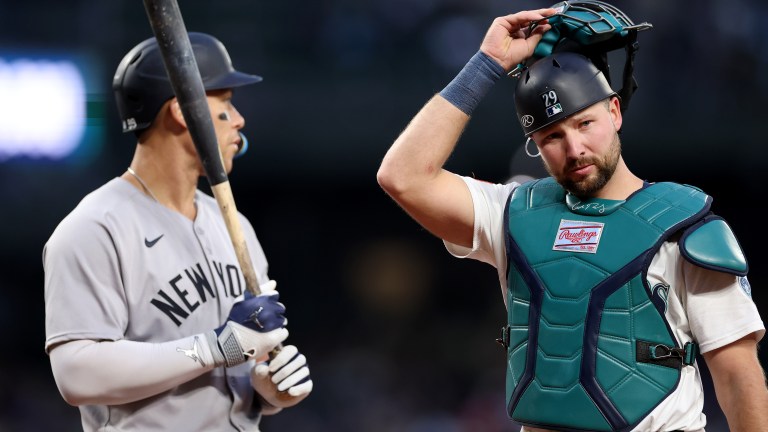
All stats and rankings for this article were taken through the first half of the 2025 season.
Much like the 3,360 batted balls that have left the yard this year, the first half of the 2025 MLB season has come and gone. As we ponder everything that has happened before the All-Star break, one thing is clear: the home run chase is on.
For the first time in league history, five hitters reached the 30 home run mark within the first half of the season: Cal Raleigh, Aaron Judge, Shohei Ohtani, Kyle Schwarber and Eugenio Suárez. These sluggers are the main characters in what is shaping out to be a historic home run season.
It could be one the league hasn’t seen since the infamous summer of 1998 — where Mark McGwire, Sammy Sosa, Ken Griffey Jr. and others all took their shot at Roger Maris’ MLB record 61 home run mark, one that would be topped by McGwire (70) and Sosa (66).
While some of these names provoke no surprise, others have defied expectations to get to this point. But for one reason or another, all of them are a part of something special this year.
Cal Raleigh
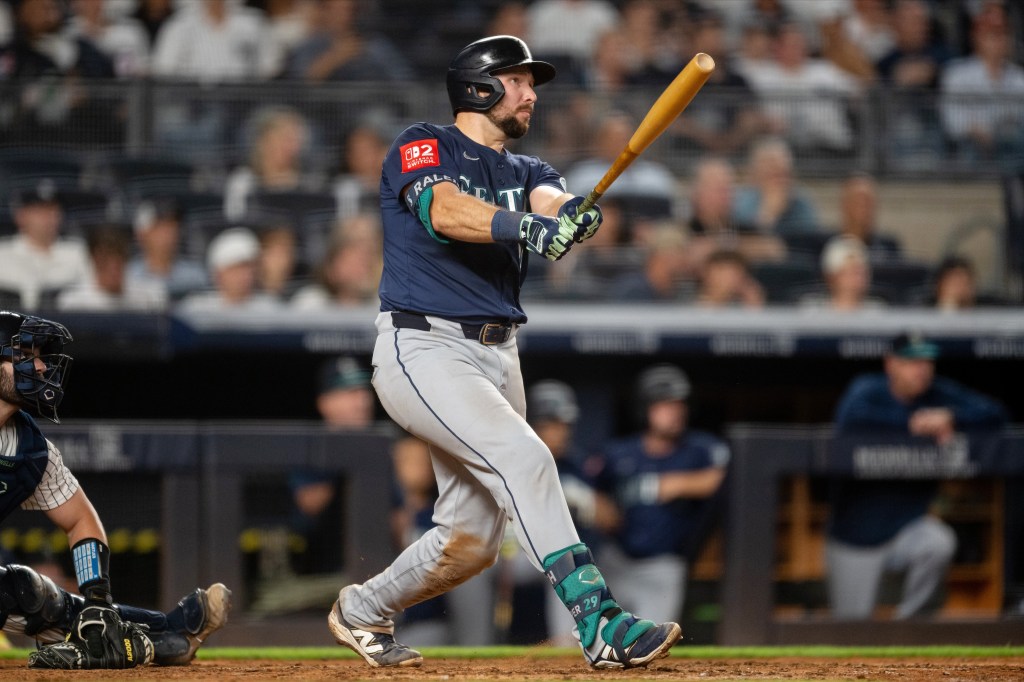
They may call him Big Dumper, but Raleigh’s career year has been no news dump in 2025
From leading the league in homers at the break to winning the Home Run Derby, everything seems to be coming up his way this year. His 38 home runs are the second most ever hit by a player in the first half of a season, trailing only Barry Bonds in 2001, who went on to hit 73 that year, which remains comfortably as the all-time record.
Raleigh’s 38 dingers put him on a 64-home run pace, a mark that would break Judge’s American League record of 62. He’s also just 10 bombs away from tying Salvador’s Perez single-season record by a catcher. Raleigh has gotten to this point by doing what he does best but at an even higher level this season.
Raleigh has played out his entire big-league career as a certain archetype of hitter — one that prioritizes quality of contact over quantity. His 27.6% strikeout rate since 2022 ranks 12th lowest among the 148 hitters with at least 1,500 plate appearances over the last four seasons.
But what he lacks in contact, he more than makes up for in power and timing. Also since 2022, he ranks third in fly ball rate (38.5%) and seventh in pull rate (48.9%). Perhaps more notably, he ranks second in pull rate on fly balls (50.9%) among hitters with at least 50 fly balls in 2025.
Throughout the league, fly balls that are pulled are 30% more likely to convert to home runs than fly balls hit straightaway or to the opposite field. As a 6-foot-2, 235 pound catcher, Raleigh has nearly perfected a swing that caters to his strengths, and the results are what is shaping up to be possibly the greatest season by a catcher in baseball history.
| CAL RALEIGH BY YEAR | PULL % | FLY BALL % | PULLED AIR % |
| 2024 | 45.5% | 36.7% | 29.5% |
| 2025 | 54.7% | 43.3% | 37.6% |
Despite already having elite skills in these aspects of baseball, the Mariners’ catcher found a way to double-down. Raleigh’s 9.2% increase in pull rate between 2024 and 2025 is the sixth highest among the 174 qualifiers between the two years.
His 6.6% increase in fly ball rate ranks tied for 17th on the same list. His 37.6% pulled air rate not only leads baseball, it’s been historic. In the month of May, exactly 50% of batted balls hit by Raleigh were hit to the pull side and were in the air (line drives, fly balls, or pop-ups). This currently stands as the highest pulled air rate a player has posted in any calendar month since at least 2008 (min. 50 batted balls).
Additionally this year, 22% of all batted balls hit by Raleigh have been pulled fly balls, currently marking the highest rate among all seasons with 200 or more batted balls since at least 2008.
He is showing what happens when a guy with elite power pulls the ball in the air as much as anyone can, and it just might result in the AL home run record.
Aaron Judge
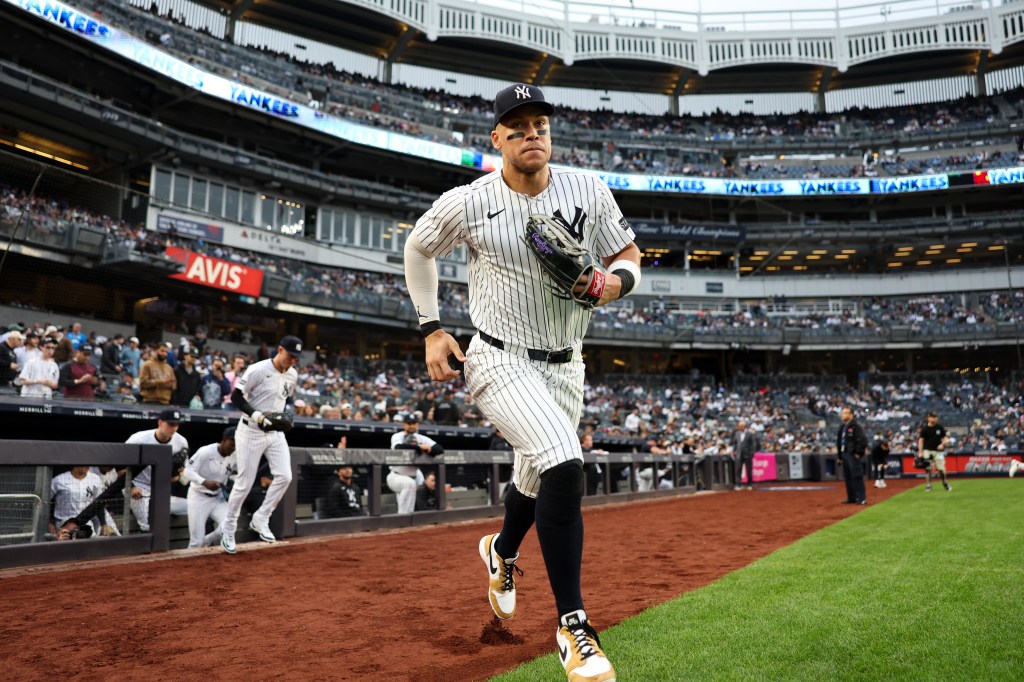
Not too far behind Raleigh is the guy who may be trying to defend his title. You may not believe it, but Judge is in the midst of another season for the ages. With 36 home runs, he is comfortably on pace for his fourth season with 50+ home runs. Achieving this feat would tie him with McGwire, Sosa and fellow Yankee Babe Ruth as the sluggers to hit the 50 mark four different times.
It comes with no surprise that Judge is doing this. It’s hard to find any fundamental differences in his game this season, which is why he is continuing his once-in-a-lifetime stretch and a frontrunner for his third AL MVP in four seasons.
Highest barrel rate in a season since 2015 (min. 200 batted balls)
2023 Aaron Judge (27.5%)
2024 Aaron Judge (26.9%)
2022 Aaron Judge (26.5%)
2025 Aaron Judge (26.3%)
2017 Aaron Judge (25.7%)
You have to go all the way down to sixth place before you find a non-Judge season on that list. This season marks the fourth time Judge found his way to 30 home runs before the All-Star break. It also marks the most home runs and the most plate appearances he has recorded in the first half.
2025 will likely go down as yet another Bondsian/Ruthian season for #99 in the Bronx. In his age-33 season, he has shown absolutely zero signs of slowing down.
Shohei Ohtani

It would have been more of a surprise to not find Ohtani on this list. With 35 home runs this season, he is on pace to reach the 50 mark for the second straight season. Much like Raleigh, Ohtani has increase both his pull rate and his fly ball rate from great to elite levels. Much like Judge, he hits the ball as hard as anyone.
Highest average exit velo on fly balls (min. 50 fly balls)
Shohei Ohtani (100.1 mph)
James Wood (99.8 mph)
Juan Soto (99.5 mph)
Aaron Judge (99.3 mph)
Kyle Schwarber (98.8 mph)
After becoming the first player to post a 50/50 season in 2024, Ohtani found ways to improve aspects power hitting. It’s something that started by a stance change.
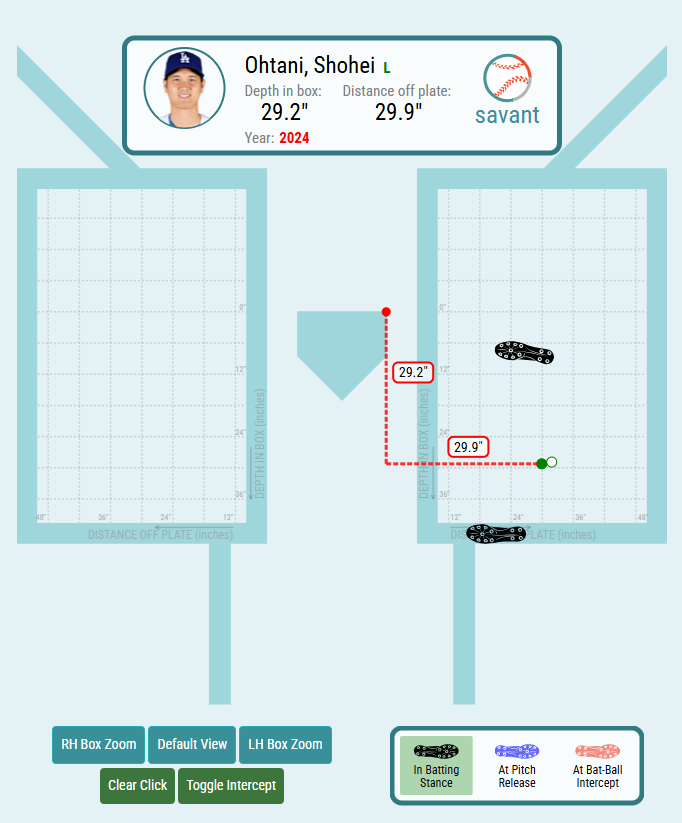
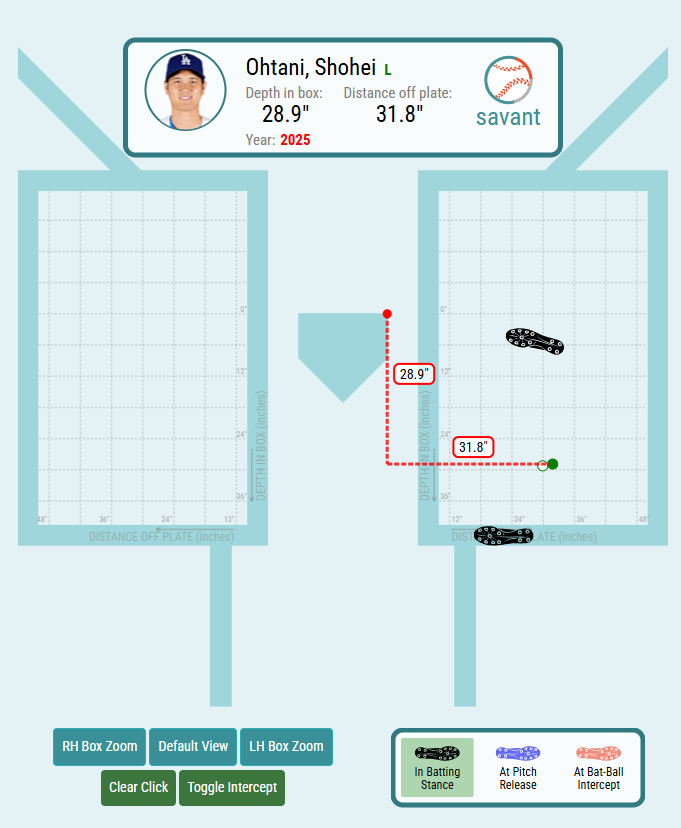
Ohtani stands a bit further off the plate in 2025 than he did last year. Although it’s only a two-inch adjustment, it’s made a noticeable difference.
On the inside part of the strike zone, the Dodger’s DH hit .310 and slugged .586. Very good numbers, but lower than the sky-high standards he set that year. In 2025, he is slashing .326 and slugging .804, the highest slugging of any lefty with at least 50 plate appearances ending on pitches in those inside zones.
Not only has his move off the plate allowed him to turn on inside pitches, it hasn’t taken from his ability to hit outside pitches. His .606 SLG against them from last year has turned to a .611 SLG this year, the third highest among lefties with at least 50 plate appearances against outside pitches.
Eugenio Suárez
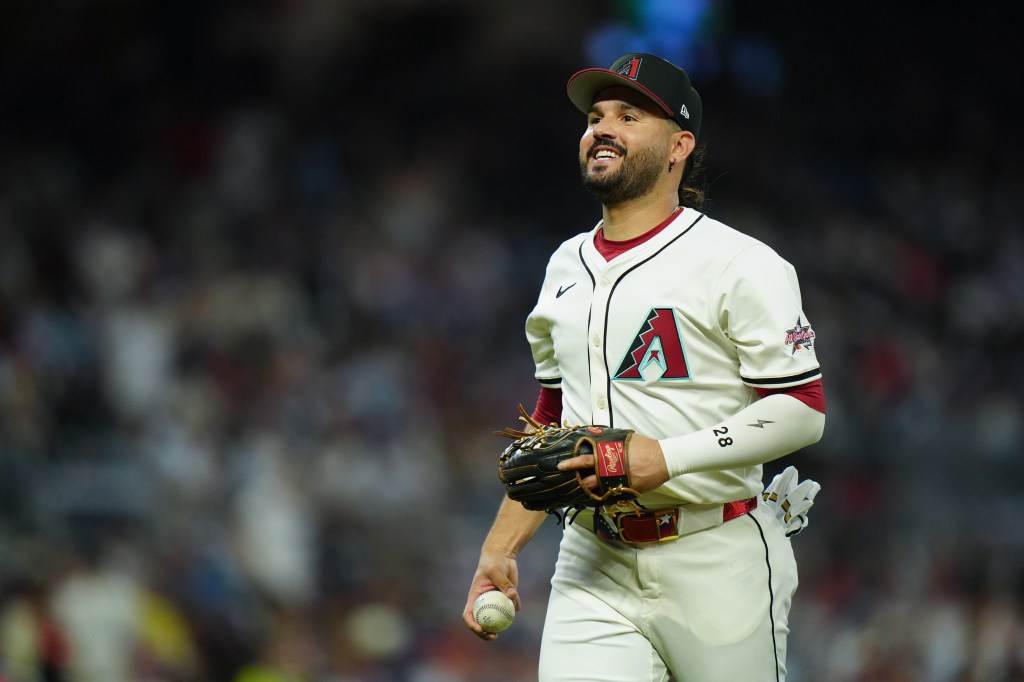
To fully understand Suárez’s 31 home run first half, a number that already surpasses his 2024 total, we need to go back to the start of last season when he began his tenure with the Diamondbacks.
Suárez got off to a slow start in 2024. From March up until the end of June, he was slashing .196/.279/.312 for a .591 OPS. In this span, he was only pulling 26.8% of his fly balls. Around the league average, but well below what it takes for someone with his power to reach his potential. He was also striking out nearly 30% of the time in this stretch. It was clear that something needed to change.
Around the start of July, Suárez moved up around three inches in the batters box. Although it might not seem significant, this made a massive difference. So much so, that Suárez continued moving up in the box as the months went on.
| Suárez BY MONTH | OPS | Pull % on fly balls |
| July 2024 | 1.131 | 69.6% |
| August 2024 | .782 | 44.4% |
| September 2024 | 1.029 | 37.9% |
After posting a sub .600 OPS in his first 80 games, Suárez finished out last season as one of baseball’s best hitters.
From July on, he slashed .312/.357/.617/.974. His 163 wRC+ ranked 10th among all qualifiers, and his 3.8 fWAR ranked fifth. More importantly, his 24 home runs over this 78 game stretch trailed only Judge and Ohtani, and tied him with Brent Rooker.
By the time September rolled around, the D-Backs’ third baseman was standing nine inches closer to the pitcher than he was in April. His average point of contact had also move up over a foot from the start of the season to the end. Despite giving himself less time to hit the baseball, Suárez was earlier on pitches than before, and it paid huge dividends.
Thanks to these changes, Suárez began pulling the ball at a prolific rate. His 49.4% pull rate on fly balls from July on was the highest among the 101 hitters with at least 50 fly balls hit in that span. His 34.1% pulled air rate ranked second.
Suárez has brought these changes over to 2025. Averaging 18.9 inches of depth in the batters box, only seven qualified hitters stand closer to the pitcher than him this year. With an average point of intercept of 16.8 inches in front of home plate, no qualifiers are more out in front of the baseball than Suárez.
As a result, he has maintained an elite pull rate, which has been the driving force behind his power surge at age 33. His 38.8% pull rate on fly balls ranks 16th highest among the 178 hitters with at least 50 fly balls recorded this year. His 28.2% pulled air rate ranks 13th highest.
Kyle Schwarber

Being an elite home run hitter isn’t something Schwarber isn’t used to, but this year has been another level of success even for him. His 30 home runs are the most he’s hit in the first half of a season.
Schwarber’s 35.0% fly ball rate this year puts him on pace for a new career high. His 52.5% pull rate is tied for his personal highest (excluding 2016, where he played in just two regular seasons.) His pulled air rate has gone from 25.8% last year to 28.7% this year, the second highest of his career.
So why, at 32 years old and year 11 in his big-league career, is Schwarber unlocking more power? He is doing so by turning on high velocity pitches.
| KYLE SCHWARBER VS 95+ MPH | SLG | Whiff% |
| 2022 | .333 | 27.8% |
| 2023 | .330 | 29.4% |
| 2024 | .563 | 29.8% |
| 2025 | .603 | 25.7% |
Fastballs around the league are only getting faster as time goes on, and Schwarber seems to be adjusting to the high heat. His .603 SLG against pitches at or above 95 MPH ranks 14th highest among the 199 hitters with at least 50 PAs ending against such pitches.
Four-seam fastballs are the pitch you typically see more than any other as a hitter. In 2024, Schwarber produced 0.6 Run Value per 100 four-seamers faced. That ranked 121st among qualifying hitters. In 2025, he is fifth highest on the same list. His resurgence against high velocity has been the driving force being his pace for a career year in home runs.
Can we see more history?
All five of the aforementioned hitters are on pace for 50 home runs or more this season. If they can all pull it off, 2025 will be the first season with five or more players reaching the mark.
Four players recorded 50 home runs in both 1998 (McGwire, Sosa, Griffey Jr. and Greg Vaughn) and 2001 (Barry Bonds, Luis Gonzalez, Alex Rodriguez, Sosa). While each hitter still has a ways to go, each of them has found their strengths in 2025, and are knocking on the door on home run history.
